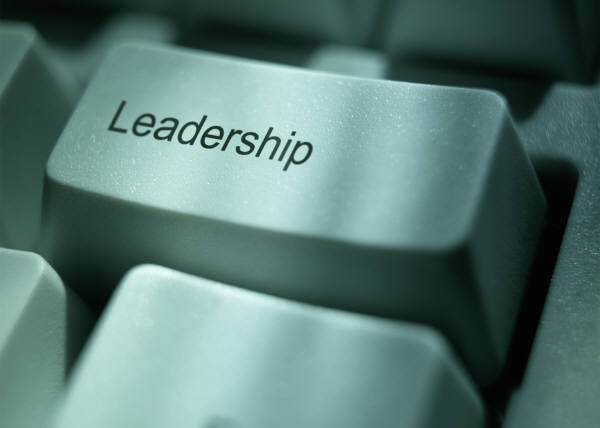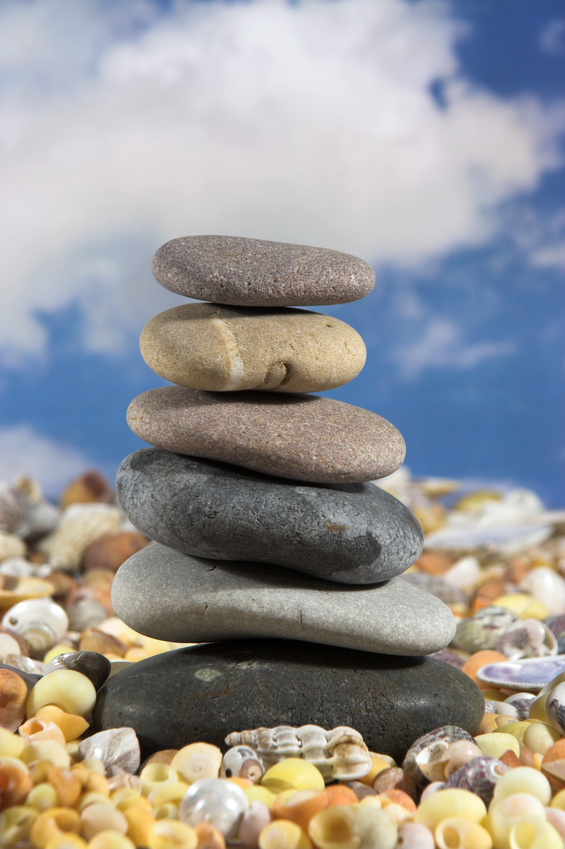See on Scoop.it – Mindful Leadership & Intercultural Communication
Mindful Leadership
How do you start your day?
See on www.siyli.org
Coach | Trainer | Speaker | Consultant
See on Scoop.it – Mindful Leadership & Intercultural Communication
Mindful Leadership
How do you start your day?
See on www.siyli.org
 Continuing on the path of one of my previous articles (About people skills and empathic leadership) where I wrote about people skills and that the ability to ‘think outside of the box’ and to create a climate of exchange, knowledge sharing and trust while leading is of major importance for providing direction and innovation to any company, I have to add the following: in fact leading with compassion and empathy is truly the most effective type of leadership. Why? Well let me take the time to explain this to you!
Continuing on the path of one of my previous articles (About people skills and empathic leadership) where I wrote about people skills and that the ability to ‘think outside of the box’ and to create a climate of exchange, knowledge sharing and trust while leading is of major importance for providing direction and innovation to any company, I have to add the following: in fact leading with compassion and empathy is truly the most effective type of leadership. Why? Well let me take the time to explain this to you!
Compassion can be defined as the “deep awareness of the suffering of another coupled with the wish to relieve it.”[1] In his book Search Inside Yourself, Chade-Meng Tan gives a definition of compassion that has tree components, given by Tibetan Buddhist scholar Thupten Jinpa:
1. A cognitive component: “I understand you.”
2. An affective component: “I feel for you.”
3. A motivational component: “I want to help you.”[2]
This leads directly to asking a simple question, as the excellent blog post of Louisa and George Altman put it rightly: do you work in a WE or a ME centered workplace? Or as Bill George, former Medtronic CEO puts it[3]: going from ‘I’ to ‘We’, leaving selfish behavior behind and acknowledging the effort of the whole.
Actually establishing a sense of belonging and trust, a culture of openness and care for each other thus bringing compassion to a team or a group of people as a leader, can have amazing effects as I have discovered for myself. Of course, it might take longer as you don’t just do things without explaining, acting top-down, but you communicate in a transparent way, opening up a dialogue, letting people comment and listen to their concerns/ideas. But at the end of the day, it will make your team very strong as its members will have established a strong relationship of trust with you and the others. Trust on the other hand is the foundation of effectively working teams. Finally, bringing compassion and empathy to your team will also highly motivate its members and if you would ask them to walk the extra mile to achieve an extraordinary goal, they would do so without even asking.
Now, imagine if more teams in an organization would think and act in the above described way; it would create a corporate climate where employees would feel at ease, understood and valorized. At the same time, excellent results would be achieved. The dream for every CEO: from good to great and from I/ME to WE…
Now: in what kind of an environment do you work in?
 Have you ever thought that you will never be able to meditate as your life is filled with work, children, pets, shopping, cleaning, cooking, gardening etc. etc.? Trust me, you are not alone! On the contrary, when looking around me, I don’t know anybody who could actually not identify with the above. Quite sad I find, as the most precious moments in a day are these couple of moments that you dedicate to yourself and to your own well-being.
Have you ever thought that you will never be able to meditate as your life is filled with work, children, pets, shopping, cleaning, cooking, gardening etc. etc.? Trust me, you are not alone! On the contrary, when looking around me, I don’t know anybody who could actually not identify with the above. Quite sad I find, as the most precious moments in a day are these couple of moments that you dedicate to yourself and to your own well-being.
But the good news is that, if I am able to find time in my busy life, you also can! It is actually quite easy if you start by reminding yourself that 15-20 minutes of practicing a relaxation technique a day can easily be the equivalent of 2-3 hours of sleep[1]… as I can never get enough sleep it seems, the prospect of spending only 15-20 minutes a day meditating and feeling like having slept over 10 hours at night, is really an exciting one for me.
The second thing to keep in mind is that you don’t necessarily need to practice ‘formal’ meditation each and every time but that there are many ‘informal’ ways that can be highly beneficial to you also. Whereas “in formal mindfulness practice, the meditator sits with eyes closed, focusing the attention on the sensations and movement of the breath for approximately 45-60 minutes at a time, at least once a day”[2]; the informal mindfulness practice can basically be carried out in any situation of your life.[3] So, here’s how to make some space for yourself:
1) Use some of the time you spend walking during the day to do it in a ‘mindful’ way. Do you walk with your dog? Walk the children to school? Walk to the train or simply walk to lunch or around the office/your house? Well, just bring full moment-to-moment attention to everything happening in your body while you walk; that’s it! You can actually walk at any speed, slowly or fast. What counts is that you are fully into what you are doing.[4]
2) Take one of the routine actions you perform during the day (washing, cooking, brushing your teeth etc.) and start doing it mindfully. Concentrate on the action itself and clear all other thoughts in your mind. What are you feeling? What are you smelling/tasting?
3) Eat one meal a day mindfully, really tasting what you eat and being fully there… it can be as short as 10 minutes or as long as a full meal. Focus on the texture of the food, the different sensations you might have etc.
4) Take 15 minutes of out of your lunch/coffee break or fix a meeting with yourself in your calendar. Find a quiet space, be it a cubicle, your car or your kitchen and concentrate on breathing and clearing your mind. Every time your thoughts wander away, gently bring them back.
It truly can be as simple as that… try it out and write back to me!
Let me finish this post with a quote I find very inspirational:
If we learn to open our hearts, anyone, including the people who drive us crazy, can be our teacher ~ Pema Chodron[5]
[1] Just search for this on the internet and you will find multiple articles on the subject, such as http://www.angelfire.com/hi/TheSeer/technique.html for example.
[2] Free medical dictionary: http://medical-dictionary.thefreedictionary.com/meditation
[3] Read for example the Chapter ‘Mindfulness Without Butt on Cushion”, p. 51 et seqq. in “Search Inside Yourself” from Chade-Meng Tan.
[4] See also ‘Walking meditation’ in “Search Inside Yourself”, p. 55-56.
[5] Found here : http://mindfulproductivity.net/2012/03/12/mindfulness-quotes/
O.K., Google, Take a Deep Breath – By CAITLIN KELLY
Excellent read: New York Times Article on Google and the ‘Search Inside Yourself’ course.
 When reading across blogs and newspapers, I very often come across something along the lines like ‘be mindful’,’ mindful coaching’ or ‘mindful leadership’. Whereas these words sound very trendy and up to the point, I am sure many readers actually wonder what mindfulness actually is and what it takes to become more mindful in our daily lives and interactions. Well, according to Jon Kabat-Zinn, mindfulness is:
When reading across blogs and newspapers, I very often come across something along the lines like ‘be mindful’,’ mindful coaching’ or ‘mindful leadership’. Whereas these words sound very trendy and up to the point, I am sure many readers actually wonder what mindfulness actually is and what it takes to become more mindful in our daily lives and interactions. Well, according to Jon Kabat-Zinn, mindfulness is:
“(..) an ancient Buddhist practice which has profound relevance to our present-day lives. It has to do with examining who we are (…) and with cultivating some appreciation of the fullness of each moment we are alive.Most of all, it has to do with being in touch.”[1]
In fact, most of our days in this fast spinning world are spent with running around, going to work, fetching the children, cooking, cleaning, shopping and doing whatever else needs to fit in our busy agendas. Unfortunately, many of these activities are not performed with a conscious state of mind, but rather in a more or less routine mode, constantly thinking about more things that need to be done or places that we need to be at. Time runs fast and the next thing we know is that many years have gone by, children grew up, excellent moments passed nearly unnoticed and we did not even realize what was going on. At a certain point, it therefore makes sense to stop, turn around and start enjoying all these little things in our daily lives that make every moment unique and worth living. There won’t be fewer things to do, less tasks to fulfill, but our change in attitude will allow us to see the different facets and moments of our existence through different glasses, those of consciousness.
Following different authors with international renown, such as Chade-MengTan or Kabat-Zinn, certain mental qualities or attitudes, “(…) provide a rich soil in which the seeds of mindfulness can flourish”.[2] These are:[3]
Whereas these qualities are certainly not new to any of us, it is certainly not easy to try and cultivate them every day anew. But the more we do, the easier it becomes to relate to others and ourselves in a different way. If for example, by the way in which you are behaving, actually ‘broadcast’ patience, empathy and openness, others will come to you more easily and it will certainly change the quality of your relationships. On top of that, you as a person will also feel less stressed and more in harmony with yourself and what you are doing. Try it for yourself! As we are all interacting in social systems with groups of individuals or individuals, you will see that with building a solid foundation for mindfulness practice, things around you will also be affected and change. New doors will open, others will close, life unfolds in a multitude of present moments…